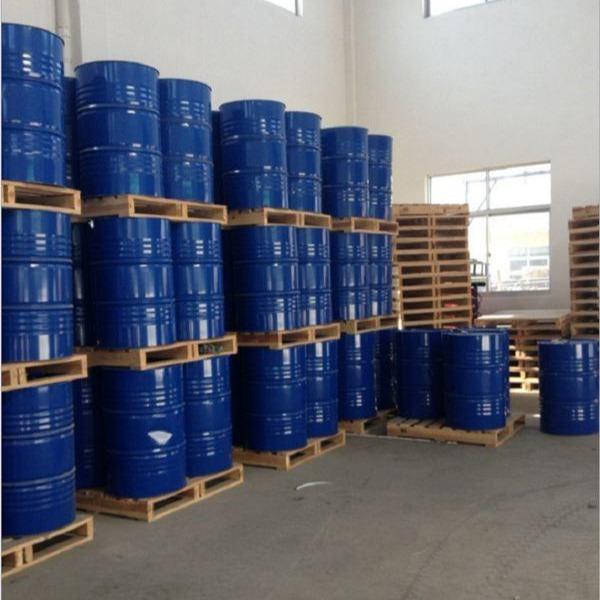-

2-Mercaptoethanol
Properties Colorless transparent liquid with special odor. Freezing point <100℃. Boiling point 157~158℃ (slightly decomposed), flash point 73℃, relative density 1.1143. Refractive index 1.4996. Soluble in water, organic solvents such as ethanol and ether, and miscible with benzene in any proportion. Viscosity (20℃) 3.43mPa.s. Preparation method Originated by the reaction of chloroethanol and sodium hydrosulfide. It can also be synthesized by the reaction of hydrogen sulfide and ethylene ...Read more -

Polyethylene Glycol
Polyethylene glycol is referred to as “PEG”. It is a high molecular weight compound formed by dehydration condensation of ethylene glycol molecules. The chemical formula is HOCH2(CH2OCH2)nCH2OH. Where n is greater than 4. The average molecular weight is 200-7000. The number after the commercial polyethylene glycol indicates the average molecular weight. For example, polyethylene glycol-400 means that the average molecular weight of the commercial polyethylene glycol is about 400.Read more -

Choline chloride
Choline chloride was developed by the Agricultural Technology Institute of the Ministry of Agriculture, Forestry and Fisheries of Japan in 1964, and registered as a plant growth regulator in 1987. It also became vitamin B4. Common choline chlorides on the market are divided into plant-carrier choline chloride and white carbon black (silicon dioxide) as a carrier choline chloride. my country’s production is about 400,000 tons, accounting for more than 50% of the global production capacit...Read more -

Monoethanolamine
Physical and chemical properties: Ethanolamine is also called “aminoethanol”. Chemical formula HOCH2CH2NH2. Molecular weight 61.08. Colorless viscous liquid. Hygroscopic, with an ammonia smell. Specific gravity 1.0117 (25/4℃). Melting point 10.3℃. Boiling point 170.8℃. Refractive index 1.4539. Miscible with water, methanol, acetone, slightly soluble in benzene, ether, slightly soluble in n-pentane. Strong alkalinity, dissociation constant K=3.39×10-10 (25℃); 25% aqueous solution p...Read more -

SURFACTIN
Biological activity: Surfactin is a cyclic lipopeptide biosurfactant that mediates the flux of monovalent and divalent cations (such as calcium ions) across lipid bilayer membranes. Surfactin can act as an antimicrobial adjuvant with antibacterial, antifungal, antimycoplasma and hemolytic effects. Surfactin also has antiviral activity against a variety of enveloped viruses.Read more -

Polycarboxylate monomer
Overview: As the main raw material of synthetic water reducer, polycarboxylic acid water reducer monomer has a great influence on the performance of water reducer. Use: As the third generation water reducer, polycarboxylic acid water reducer can greatly reduce the amount of water in concrete due to its excellent water reducing performance, and has a significant effect on improving strength. Therefore, it is widely used in concrete.Read more -

ETHYLENE OXIDE
Ethylene oxide, also known as ethylene oxide or oxane, is the simplest cyclic ether. It is a colorless and flammable gas at room temperature and a colorless and easy-flowing liquid at temperatures below 10.7°C. It has the smell of ether and its vapor is irritating to the eyes and nasal mucosa. It is miscible with water, ethanol, alcohol, and ether. It has very active chemical properties and can react with many compounds to form explosive mixtures with air. The explosion limit is 3%-100% (volu...Read more -

Cyclohexylamine
Cyclohexylamine is a colorless, transparent liquid with a strong fishy and ammonia smell. It is flammable. It is soluble in water and can be miscible with common organic solvents such as ethanol, ether, acetone, ethyl acetate, chloroform, heptane, benzene, etc. Cyclohexylamine can volatilize with water vapor. It can absorb carbon dioxide in the air to form white crystalline carbonate. It forms an azeotrope with water, with a boiling point of 96.4°C and a water content of 55.8%. The aqueous so...Read more -

Mesitylene
Mesitylene (also known as 1,3,5-trimethylbenzene, molecular formula C9H12) has a molecular structure in which the C atoms of the benzene ring form σ bonds with sp2 hybrid orbitals, and the other C atoms form σ bonds with sp3 hybrid orbitals. It is a functional group present in many organic compounds. It is an aromatic hydrocarbon obtained by symmetrically replacing three hydrogen atoms on the benzene ring with three methyl groups. It is widely present in coal tar and some petroleum. It is a c...Read more -

Pyromellitic Dianhydride
The English name of pyromellitic dianhydride is Pyromellitic Dianhydride (abbreviated as PMDA, the same below), which is mainly used to synthesize polyimide. Since polyimide has excellent ultra-high heat resistance, acid and alkali resistance, excellent mechanical properties, electrical properties and dimensional stability, it is widely used in high-tech fields such as aviation, aerospace, microelectronics and atomic energy that have strict requirements on material properties.Read more -

1,2,4,5-Tetramethylbenzene
Properties: Durene, also known as 1,2,4,5-tetramethylbenzene, is an organic compound with a chemical formula of C6H2(CH3)4. It is a colorless solid with a sweet odor. It is one of the three isomers of tetramethylbenzene, the other two being 1,2,3,4-tetramethylbenzene (melting point −6.2°C) and 1,2,3,5-tetramethylbenzene (melting point −23.7°C). The melting point of durene is relatively high (79.2°C), which reflects the high symmetry of its molecule. Uses: Durene is a component with high utili...Read more -

1,2,4-Trimethylbenzene
Chemical properties: Colorless transparent liquid. Insoluble in water, soluble in ethanol, ether and benzene. Uses: 1.1,2,4-Trimethylbenzene can be used to produce PVC plastic plasticizer trioctyl trimellitate, powder coatings, motor heat-resistant insulating paints, etc. This product is a basic organic chemical raw material and can be used to produce medicines (vitamin E), dyes and synthetic resins. It can also be used to make trimellitic anhydride, pyromellitic dianhydride, water-soluble al...Read more





